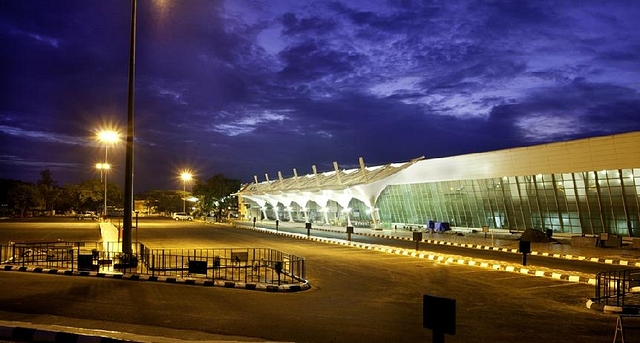
Farms To Factories: How Coimbatore’s Economy Was Transformed By Entrepreneurship
Entrepreneurship in and around Coimbatore is a fascinating story of the region’s transformation where rural farmers built a diversified and relatively prosperous economy.
The recent spate of distressed farmer suicides have triggered several debates and caught the attention of our ruling establishment and policy makers alike – especially when suicides are being reported everywhere, from the fertile Mandya District regions in Karnataka to chronically drought-prone regions like Bundelkhand.
It is a serious concern to be addressed because after all two-thirds of India’s population is still tied to Agriculture and its allied economy. Though it contributes only 14% to our overall GDP, it still plays a significant role in the overall socio-economic fabric of India.
The failure in India’s agricultural economy is being attributed to issues ranging from unpredictable monsoons (due to global warming) to rudimentary agri-market infrastructure and practices. To address these issues, from time to time, various Central and State Governments have come up with Electricity subsidy, Diesel subsidy (though grossly misused by commercial vehicles), NREGA schemes and very recently crop insurance scheme to alleviate our farmer’s distress.
Going forward, it is imperative that our policymakers come up with the economic policies promoting rural but non-agricultural entrepreneurship which in turn generates employment opportunities locally. This author hails from a rural agricultural background and would like to highlight the successful example of Coimbatore and its surrounding Districts aka the ‘Kongu’ region of Tamil Nadu in this regard.
Coimbatore and its surrounding districts, located in the western parts of Tamil Nadu, are known for their entrepreneurship and have distinguished themselves in multiple SME sectors ranging from Engineering machinery, Electric Pumps, Textiles, Trucking, Poultry, Sabudana production etc. This directly contributes almost 40% to the state’s GDP and is estimated to be around USD 140 Billion. Unlike Tier–II economic clusters like NCR region, Pune etc. which leverage their physical proximity to the country’s biggest economic and political hubs like Delhi and Mumbai respectively, Tamil Nadu’s western districts practically grew its economy on its own!
In FY 2015, Tirupur’s textile cluster, located in a drought-prone area managed to export about USD 5 Billion worth of knitwear products! Two-thirds of India’s requirement of Electric motors and pumps are manufactured in Coimbatore. Namakkal and neighbouring districts have managed a share of 20% in India’s total egg production and have even started exporting to Middle-Eastern countries.
Sabudana, used in a variety of dishes such as desserts like kheer, khichdi, vada or used as a food on days of fasting (vrat-upwas), traces its history to Salem’s cottage industry as early as the 1930s and ’40s and today 70% of India’s Sago processing happens in Mills around the Salem District.
The greater point is that over the last 60-70 years, rural farmers of western Tamil Nadu took up entrepreneurship and skillfully graduated from producing raw agricultural goods to producing finished processed goods and in the process moved up the economic value chain. Over time, determined entrepreneurs predominantly from the farming community successfully forayed into other non-agri sectors, forming a well diversified Tier-II/III economic cluster in the region which can withstand global economic fluctuations and unpredictable monsoons.
As a result, though Tamil Nadu’s western districts are located in a drought-prone region, farmer suicides reported from this region are relatively less compared to regions like Vidarbha, Bundelkhand etc.
In 1960-70s Tamilians were migrating to big metros like Mumbai, Delhi in search of job opportunities ranging from clerical to manual labourers. But today in a reversal trend Tamil Nadu has a fairly large inbound migrant population, estimated to be over 10 lakhs, mainly employed in the state’s western region. These migrant workers hailing from Assam, Bihar, Orissa, Bengal, Uttar Pradesh and even Nepal, work in small engineering ancillary units, Lorry bodybuilding units, hosieries, roadside eateries as well as fancy city restaurants, as security guards and even farmhands. Tamil Nadu’s western districts are the most sought after places for employment opportunities.
Entrepreneurship around Coimbatore districts is a fascinating story as to how entrepreneurship can transform a region, and how such spirit of entrepreneurship is generated. Of course, perils are associated with economic growth like anywhere else and require a judicious balancing between economic growth and environmental sustainability.
The tradition of business and entrepreneurship in the Coimbatore belt evolved over a period of last two hundred years, reached its pinnacle in the ’50s and ’60s, thanks to the late Chief Minister K Kamaraj. Kamaraj and his able Cabinet Ministers R Venkatraman and C Subramanian laid the foundation for Tamil Nadu’s Tier–II/III economic clusters, even before these terms were coined. Thanks to their vision, Tamil Nadu enjoys a healthy economic activity in Tier-II/III cities like Coimbatore and Trichy absorbing rural youths into the economic mainstream and offering non-agri opportunities.
While IT industry boom and economic liberalization initiated in the ’90s benefitted big metros, the Tier-II/III cities were left out of the economic growth story widening the urban-rural inequality. We may not want mass migration of rural farmers into big metros in search of jobs and creating further slums, perhaps Tier-II/III cities centered economic growth offer better alternatives for the rural population.
Once the spirit of entrepreneurship enters the living traditions of the people, then it is only a matter of expansion and diversification into related and even different areas of economic activities.
Our policy planners may want to study Coimbatore region’s success story where rural farmers built a diversified and relatively prosperous economy over a period of last 50 years and may consider implementing the success elsewhere to alleviate India’s rural issues!